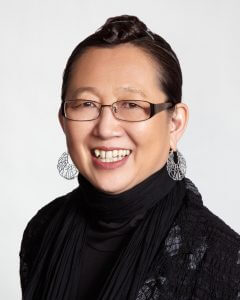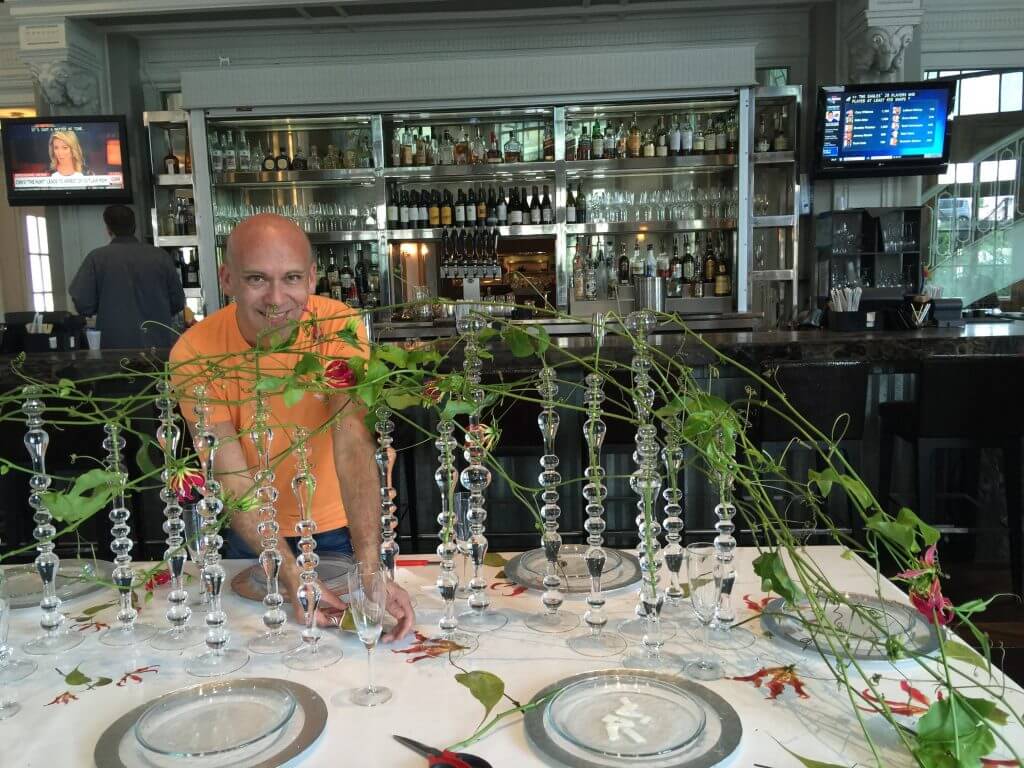 In this week’s blog post, we caught up with Hitomi Gilliam, AIFD, of Design 358 in Vancouver, British Columbia, who recently conducted a European Master Certification program in Atlanta with partner Tomas de Bruyne. Titled “Intimate to Ultimate,” the event focused on weddings.
In this week’s blog post, we caught up with Hitomi Gilliam, AIFD, of Design 358 in Vancouver, British Columbia, who recently conducted a European Master Certification program in Atlanta with partner Tomas de Bruyne. Titled “Intimate to Ultimate,” the event focused on weddings.
KH: Tell me a little about ‘EMC+ Intimate to Ultimate’.
HG: EMC+ Intimate to Ultimate Bridal Event Workshop was the first of the new genre of workshops that European Master Certification (EMC) program launched to provide the most needed professional training in the areas which are growing quickly in the floral industry. While some areas of floristry is at a standstill, some other parts of the business is picking up speed.
Eighteen florists participated. They learned:
- The importance of understanding the scale of the event and the event venue – thus the title (“Intimate to Ultimate”). The emphasis of this workshop was on luxury weddings.
- Suitability of the design style to the venue.
- Planning the overall look and feel of the designs.
- Using sketches, drawings and on-scale floor plans to figure out the exact procurement of products needed.
- Creative mechanics involved in creating stand-out bridal event designs.
- Time management for off-site preparation and on-site installation.
- Design team management and team expectations.
KH: When is the next workshop?
HG: The next EMC+ workshop is in the planning stages for 2016. However, our next EMC program is scheduled to begin on the West Coast, on October 22 to 26 at City College of San Francisco, and on the East Coast, on October 30 to November 3 at East Coast Flower Wholesale in Norwalk, Connecticut. (Go to www.emcprogram.com for further information.)
KH: Who are these programs for? Do florists need an AIFD education to grasp the concepts?
HG: EMC+ workshops are for anyone who is interested in improving their skills within the specific course topic offered. Of course those who are advanced designers will grasp concepts and skills quicker than others, but wherever there’s a will, there’s a way that a student can learn to bring home new skills and concepts for their specific business.
[do_widget “MailChimp List Signup”]
KH: What is so special about the European style of floral design? How does it help florists distinguish themselves?
HG: Understanding floral design from an European perspective and training adds extra dimension to your work. Extra knowledge in flower and plant nomenclature, as well skill and efficiency development in European design techniques indicates the highest level of professional floral training. Also, from consumers’ perspective, a European-trained designer has extra street cred and appeal.
KH: I understand that EMC wants to promote sustainable floristry. Could you elaborate?
HG: EMC believes in teaching floristry that is sustainable. We would like to see floristry brought up to speed, to be vital and vibrant like the fashion industry. It needs to be fashion forward and ever changing. In order to do this, we have to develop solid connections with consumer trends. We need to explore development of organic design concepts; studying ways to support “Field to Vase” concepts to support locally grown flowers; making conscious effort to reduce our carbon footprints by selecting products that respect this way of production; to match our products with the conscious lifestyle choices being made by the consumers today.
EMC will explore ways to make our fashionably natural commodity one of life’s necessity!
Stay tuned for upcoming issues of Canadian Florist, where Gilliam will discuss event trends (and how florists can capitalize on them), upcoming programs and European design in more detail.
Main image courtesy http://emcprogram.com/?p=2629

